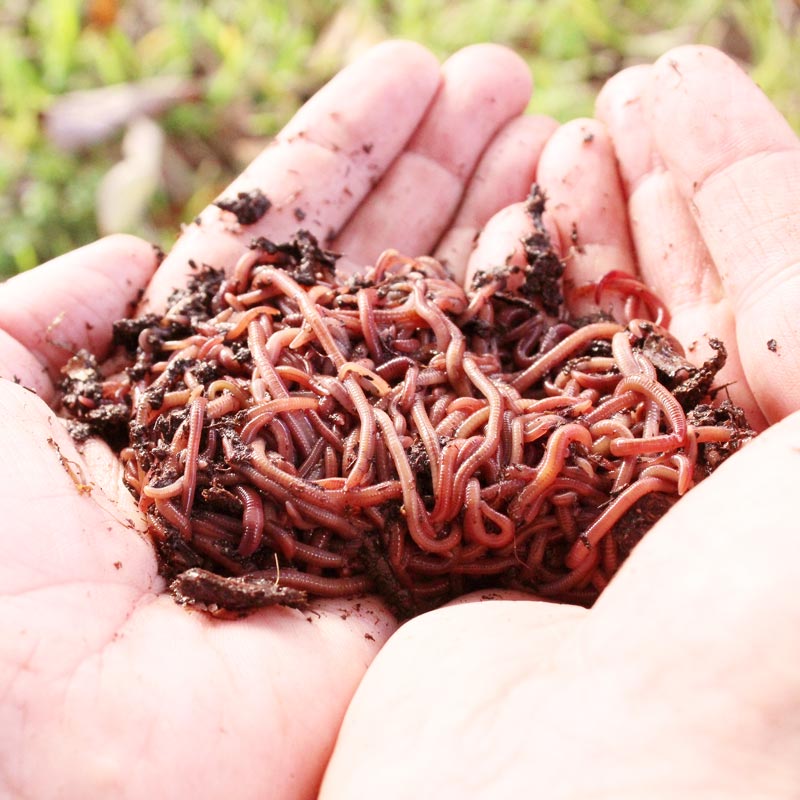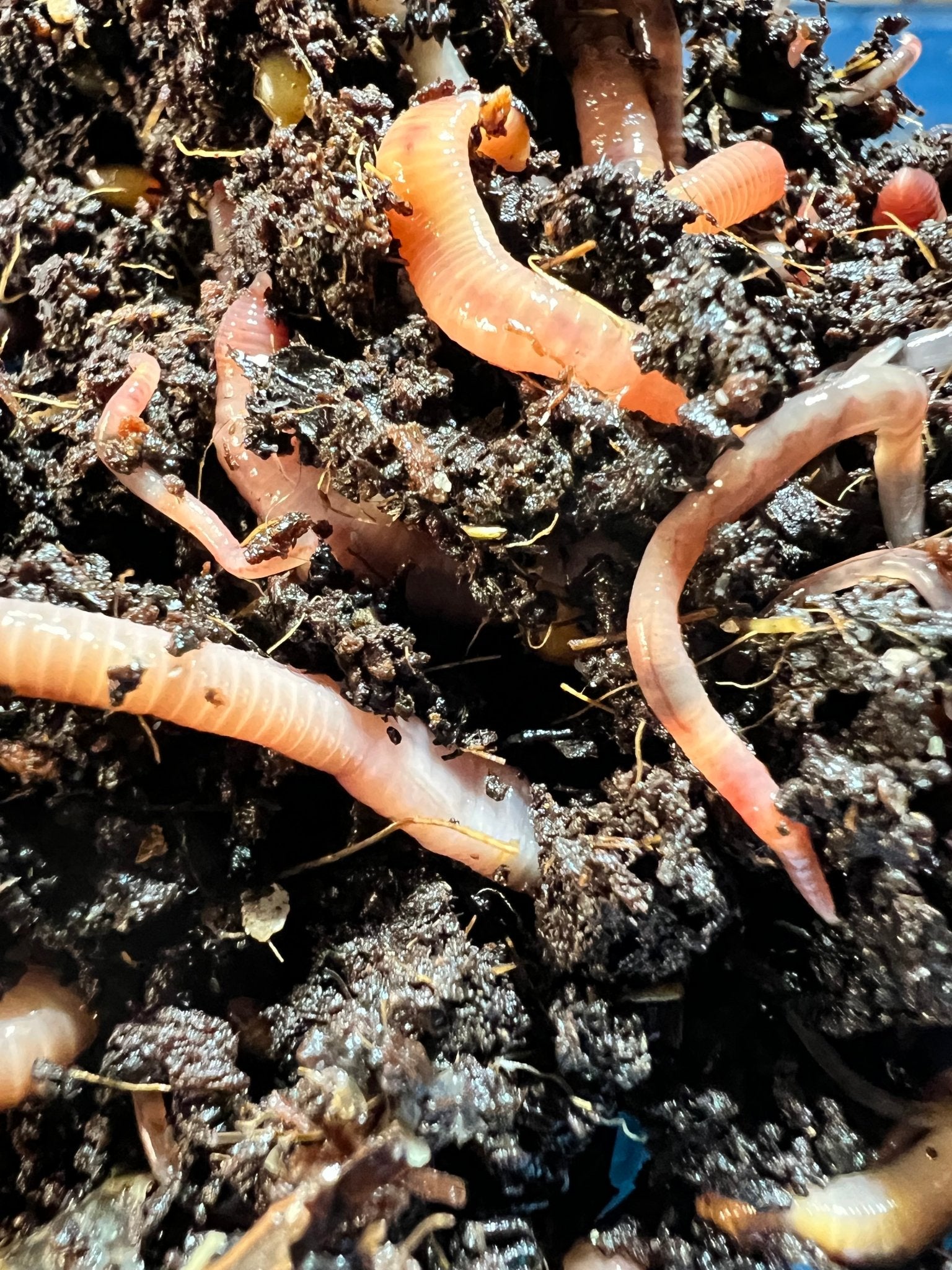The Secret to Lush Lawns Starts with Red Wiggler Express Yard Care Solutions
The Secret to Lush Lawns Starts with Red Wiggler Express Yard Care Solutions
Blog Article
Unlock the Secrets of Red Wigglers: Your Guide to Composting Success
The integration of red wigglers right into composting methods provides a significant chance for improving soil health and advertising sustainability. Understanding their requirements and actions is crucial for enhancing their potential, from setting up an ideal worm bin to feeding them the ideal products.

What Are Red Wigglers?
(Lake Hickory Bait)Red wigglers, scientifically referred to as Eisenia fetida, are a varieties of earthworm mostly made use of in composting because of their impressive capacity to decay natural matter efficiently. These worms are identified by their reddish-brown pigmentation and a fractional body, normally measuring between 3 to 4 inches in size. Unlike various other earthworm species, red wigglers prosper in abundant, natural environments, making them optimal for vermicomposting systems.
Belonging To North America, they are frequently located in rotting fallen leaves and compost heap, where they play an essential function in nutrient recycling. Their adaptation to staying in a wet, cardio setting enables them to consume large amounts of organic waste, breaking it down right into nutrient-rich spreadings that enhance dirt health.
Red wigglers replicate swiftly, with a single worm efficient in producing numerous cocoons each week, each including numerous hatchlings. This rapid reproduction price adds to their performance in composting operations. They like temperature levels in between 60 ° F and 80 ° F, and their task level boosts significantly within this variety, additional assisting in the decomposition process. Understanding the biology and habits of red wigglers is essential for maximizing their capacity in composting applications.
Benefits of Using Red Wigglers
Taking advantage of the power of red wigglers in composting offers numerous benefits that enhance soil health and promote sustainable waste management. These remarkable organisms effectively damage down natural issue, changing kitchen area scraps and lawn waste into nutrient-rich vermicompost. This completed product is extremely beneficial for plant development, as it improves dirt framework, boosts dampness retention, and improves nutrition accessibility.

(Red Wiggler Express)In addition, the visibility of red wigglers in your composting system can accelerate the composting procedure, producing top notch compost in a portion of the moment compared to typical methods. The spreadings created by these worms are also teeming with valuable bacteria that even more improve the soil ecosystem.
Establishing Your Worm Container
Producing an effective worm container is a simple procedure that can considerably boost your composting efforts. The first action is choosing a suitable container. Worm containers can be made from plastic storage bins, wood boxes, or commercially readily available worm containers. Make sure the container has ample drainage and air flow holes to keep optimal wetness degrees and airflow.
Next, prepare the bedding material, which acts as the worms' environment. A mix of shredded newspaper, cardboard, and coconut coir works well, supplying a comfy environment for the worms. Goal for a bed linens depth of regarding 4-6 inches. Dampen the bed linens gently, ensuring it resembles a moist sponge without excess water merging near the bottom.

Feeding Your Red Wigglers
To ensure the wellness and efficiency of why not find out more your red wigglers, it is vital to provide them with a well balanced diet that fulfills their nutritional requirements. Red wigglers thrive on a varied range of natural products, which not only provide required nutrients yet likewise advertise reliable composting.
Begin by integrating kitchen area scraps such as veggie peels, fruit cores, and coffee premises. Avoid citrus fruits, onions, and garlic, as these can be destructive to worm health and wellness. Additionally, present shredded paper, cardboard, and completely dry leaves to develop a well-aerated atmosphere.
Feeding regularity ought to be monitored; normally, worms can eat half their body weight in food weekly. It is vital to avoid overfeeding, as excess food can cause undesirable odors and attract bugs. A good method is to include food in small quantities, permitting worms to process it before presenting a lot more.
Maintaining wetness degrees is also important; the bed linen should perspire yet not soaked. Lastly, be sure to consistently examine the temperature and pH levels of the container to make certain an optimal atmosphere for your red wigglers, eventually boosting their composting efficiency.
Harvesting and Making Use Of Compost
An effective composting process with red wigglers culminates in the rich, dark garden compost referred to as vermicompost, which can dramatically boost dirt health and wellness and plant growth. Harvesting this nutrient-dense material typically happens every three to 6 months, relying on the dimension of your system and the amount of raw material being processed.
To gather, carefully separate the garden compost from the worms and any type of undecomposed materials. One reliable approach includes relocating the components of the bin away and including fresh bed linen and food to the void, urging the worms to move. After a few days, the garden compost can be gathered from the opposite side.
It is essential to use vermicompost correctly to maximize its advantages. By incorporating vermicompost right into your horticulture regimen, you not just reuse organic waste however additionally create a growing community that sustains lasting gardening methods.
Verdict
In summary, red wigglers serve as extraordinary allies in composting initiatives, transforming organic waste into nutrient-rich vermicompost. By comprehending the ideal problems for their habitat, feeding requirements, and compost harvesting techniques, gardeners can enhance soil wellness and advertise plant vigor.
Report this page